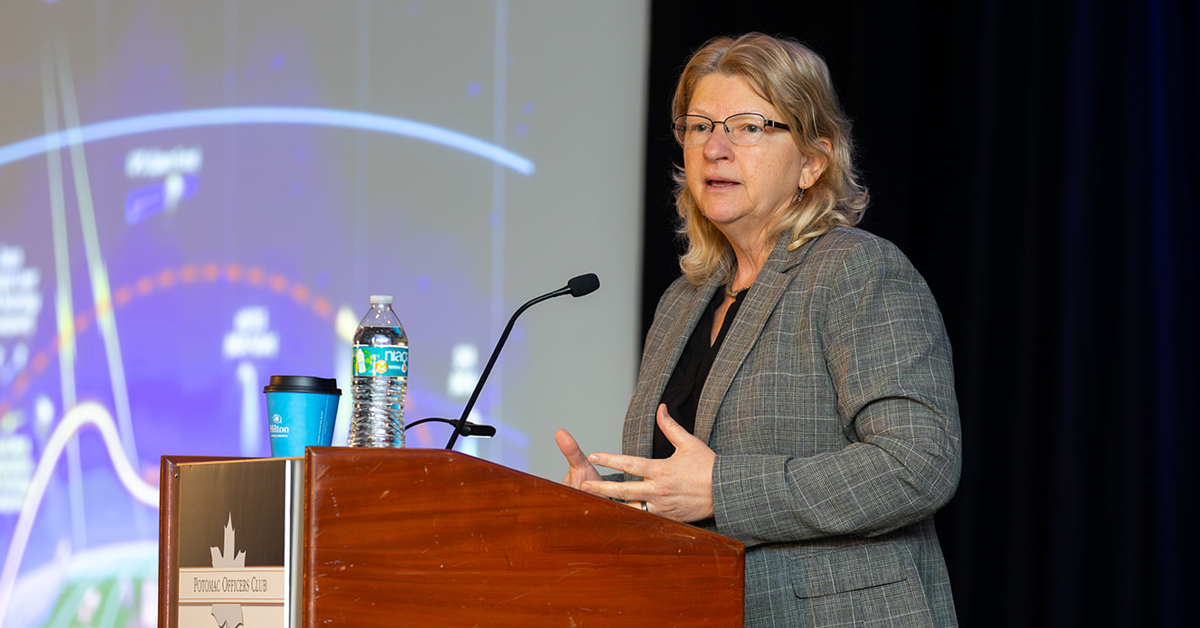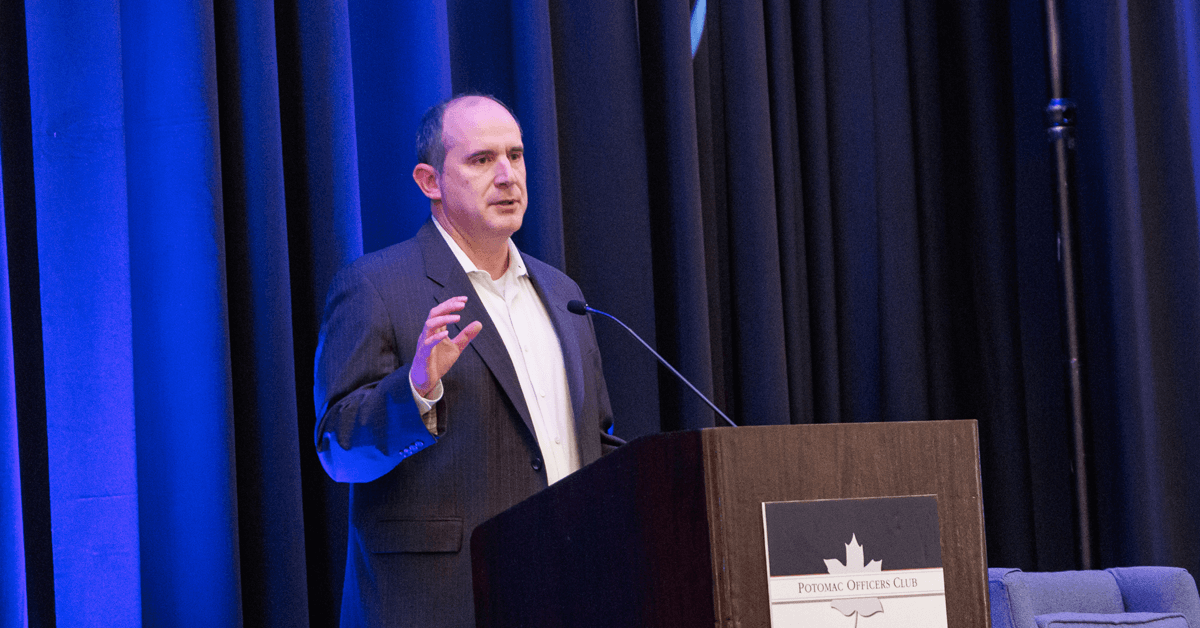Since the 1980s, the United States has been pivoting along an ever-evolving tract of developing technologies to protect against and respond to adversarial missile attacks. The Missile Defense Agency (once the Strategic Defense Initiative Organization and the Ballistic Missile Defense Organization) aims to be agile in its stance toward threats from rogue nations like North Korea and Iran in recent years, which it says are currently focusing on intercontinental ballistic missiles—able to travel a range exceeding 3,400 miles.
In a keynote address at the Potomac Officers Club’s Industrial Space Defense Summit Thursday, MDA Executive Director Laura DeSimone said that for the agency, “everything revolves around the threat [and] starts with the threat.”
“We have very close ties to the intelligence community and really depend upon all instruments and our worldwide network of overhead sensors to collect other systems that our adversaries are developing,” DeSimone relayed.
The executive director illustrated how the agency keeps a tab on systems in development across the globe and shapes its actions and work accordingly, projecting “what those systems are capable of doing” and constructing “high-fidelity models.” MDA’s team then sets those future projected capabilities as “design requirements” and they are realized in the country’s own missile defense apparatuses.
When examining a potential threat, DeSimone says the agency’s analysis is predicated on three key categories: speed, maneuver and raid size.
She went on to share with the audience assembled at the Hilton McLean that the U.S. is eyeing near-peer competition pursuing submarine launch systems, air launch systems and mobile launch systems, as well as technologies that are able to “limit our indications of and warnings of an incoming attack.”
“They do that through deception techniques and using mobile launchers that they’re able to keep hidden and bring out only, in some cases, just tens of minutes before a launch event,” DeSimone said, adding that the U.S. has helped to launch advanced air missiles in the conflict between Russia and Ukraine.
DeSimone also gave insight into the fact that the most concerning rogue nations have moved away from missiles with traditional ballistic paths of attack, as these are now easily prepared for and anticipated. Newer models are able to change course midway through flight in a dangerous fashion.
To combat these advanced mechanisms, the MDA is concentrating its current efforts in three primary areas. The first is the ground-based midcourse defense program. In this operation, MDA has spearheaded the glide phase interceptor program—“the engagement system that we’re trying to develop to intercept hypersonic weapons during the glide phase”—which DeSimone says is moving along nicely. There are two government contractors, Raytheon Technologies and Northrop Grumman, who are working on the project. After arriving at these two companies’ concepts through work that involved “hypersonic testing based on high-fidelity modeling,” their ideas were presented to the Missile Defense Executive Board on Friday, April 21, and approved to move forward by Undersecretaries of Defense for Research and Engineering and Acquisition and Sustainment, Heidi Shyu and William LaPlante, respectively. (Both aforementioned execs are Wash100 Award winners.)
The second chief focus of the MDA today is the program working to defend Guam, the U.S. territory in the western Pacific that is within feasible striking distance of North Korea and other nations.
“It is a very strategic location for forces and equipment, and it is the number one priority for the INDOPACOM commander to deliver a defensive capability to protect those forces and equipment and the people of Guam from missile attack…a very, very small island, but a very challenging program, ” DeSimone stated.
The MDA executive director said efforts at the U.S. outpost consist of integrating legacy equipment and building up radar capabilities “to look not only towards space and an incoming ballistic attack, but also give us capability all the way down to the deck for the cruise potential cruise missile attack.” She noted that the Guam defense initiative is a foundational part of the agency’s requests in the fiscal year 2024 budget discussions.
Finally, MDA is deeply invested in the hypersonic defense program, which seeks to establish able deterrence and deflection for hypersonic grade missiles. Just as DeSimone says MDA is lacking in midcourse defense capabilities, she attested that there are significant “gaps in our sensor coverage” of hypersonic threats, partly because the tools were tailor-made to circumvent the current American defenses.
DeSimone indicated the crucial nature of attaining a space-based sensor that can provide information on the “berth and the death track on the trajectory of a hypersonic weapon.” This sensor would also ideally enable “discrimination and fire control quality cue down to our ground based systems such that we can alert and the right ship [and] the right defensive system to try to go engage the target.”







